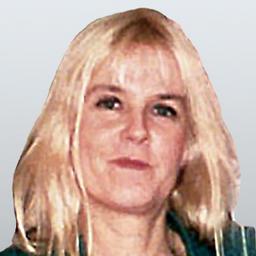An interview with Mark Pendergrast, author of For God, Country & Coca-Cola
(Basic Books)
MR: Your newly expanded book, For God, Country & Coca-Cola, certainly tells the complete history of Coca-Cola for Coke buffs and enthusiasts, collectors and food historians. But it also offers a view of social, political and marketing history in the US which is fascinating.
MP: By restricting the history to Coca-Cola--looking at history through a green Coke bottle, so to speak--I could look at a wide array of subjects. The book has appealed to people who are interested in popular culture, marketing history, imperialism, equity, the impact of war, public health, globalization, corporate social responsibility, and more.
MR: No one alive today remembers the era of patent medicines or even the elaborate soda fountains where people 100 years ago gathered to socialize. Yet Coke’s identity and success are rooted in both.
MP: In the beginning, Coca-Cola, invented in 1886, was a patent medicine that treated headaches, hangovers, a mythical disease called neurasthenia,and other ailments. It had a small quantity of cocaine and quite a bit of caffeine in it. At first it was sold primarily with medicinal claims, but by 1895 many consumers, especially women, were writing to the company to complain that they liked the drink but didn’t want to have to be sick to take it. Frank Robinson, whom I call the unsung hero of Coca-Cola, heeded them and began to focus company advertising on the “delicious and refreshing” aspects of the drink. Then, when the Spanish-American War broke out in 1898, the U. S. government taxed medicines but not soft drinks. They taxed Coca-Cola as a patent medicine, but the company sued, claiming it was just a soft drink, and won. That was another reason they dropped medicinal advertising.
MR: I was surprised to learn in your book that patent medicines were the reason the magazine industry developed.
MP: Most advertising in those days was straightforward--“this is our sewing machine and here is how much it costs.” Patent medicines, on the other hand, because they claimed to treat diseases that ailed people, required marketing and over-the-top claims. Their makers, of course, were mostly frauds and they realized they would have to pay for this kind of marketing. They could also afford to, because their patent medicines cost little to produce and were sold for a large profit. Ironically, it was the magazines that later investigated and exposed patent medicines.
MR: Being ruled a soft drink instead of a medicine was not the only time Coke dodged a bullet. It is currently navigating the obesity epidemic--being accused of adding weight to people--by introducing more artificially sweetened drinks.
MP: Coke was actually slow to jump on the diet drink bandwagon and introduced Tab after Diet Rite Cola was already on the market. The banning of cyclamate [a popular artificial sweetener used in early diet soft drinks] over 40 years ago was a setback. I think it was an over-reaction because the government did not really look at a large cohort or the epidemiology before concluding that it caused cancer. Instead, they fed it in huge quantities to rats.
MR: You write in the book that the cyclamate rat studies were funded in part by the sugar industry.
MP: Yes. Since then, there has been a search by Coke and other soft drink makers for acceptable, natural low-calorie sweeteners. People don’t like chemicals, and I don’t blame them, though there is no firm scientific evidence that aspartame and other sweeteners are harmful. Stevia, a natural low-cal sweetener, unfortunately has a bad aftertaste.
MR: Speaking of bad tastes, Coke is now made with high fructose corn syrup which has gotten a lot of bad press over possible health side effects. People also charge that it doesn’t taste as good as sugar.
MP: High fructose corn syrup replaced sugar because of protective tariffs on American sugar, making HFCS cheaper in the USA. In my opinion, it does not taste as good as sugar, though I don’t think there is much evidence it does the harm it is sometimes linked to.
MR: After removing the cocaine and reducing medicinal claims, navigating the obesity epidemic and the New Coke disaster of 1985, which you say was Coke’s biggest mistake, where does the company go now?
MP: Diversification. Since debuting Coke Zero and purchasing Vitaminwater, Coke is continuing to expand its line. Globally, it offers 3,500 types of drinks with 500 brands.. END
Mark Pendergrast, is the author of several other books addressing food, the environment, diseases, and social issues including Japan’s Tipping Point: Crucial Choices In The Post-Fukushima World, about renewable energy efforts in Japan;Inside The Outbreaks, a history of the Center for Disease Control and Prevention’s Epidemic Intelligence Service;Uncommon Grounds, the history of coffee; Victims Of Memory, a book about so-called recovered memories; and more.Prevention recently sat down with Pendergrast to talk about For God, Country & Coca-Cola: The Definitive History of the Great American Soft Drink and the Company That Makes It, which charts the marketing and popularity of the “real thing” over more than 125 years.
Martha Rosenberg is author of the award winning expose, Born with a Junk Food Deficiency, available in book stores, libraries and online.





